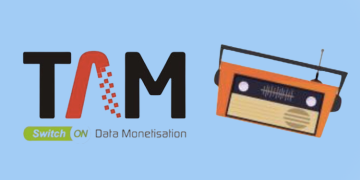A new study done by independent research agency Lumen and Outbrain reveals the relationship between consumers trust in advertising. The study, draws on the responses of over 900 European consumers and looks at how trust, clicks, and purchases are impacted by online ad formats.
The study found that Native ads take the lead (+28%) on consumer trust, ahead of social formats. Consumer behaviour strongly indicated a bias towards this specific ad format over others across a range of metrics that were investigated.
Native is trending and for good reason! These latest results confirm that Native is the prefered form of advertising for consumers and has the potential of revolutionising the nature of advertising, or at the very least, gaining back online users trust.
The study explore consumers’ perceptions of ads based on their format and their likelihood to drive further consideration or action. When comparing native recommendations to social and display ads, the study found that native recommendations came out strongest across all the metrics measured. As a whole, we can conclude that all these metrics contribute to the overall trust consumers have in Native ads.
Firstly Native are perceived as being easy to understand, scoring 62% higher than displays ads and 31% higher than social ads. Understanding is linked to transparency, i.e if the user understand what they are being advertised, there is a sense of transparency and thus trust.
Giving the user value, otherwise known as pull marketing vs push marketing is a far more effective means of engaging qualified audiences. According to the study, native ads are perceived as being more informative, scoring 60% higher than display ads, and 14% higher than social ads.
And finally, native recommendations scored as the least annoying or intrusive vs both display and social. Respecting the user and not interrupting their online experience is a key pillar in creating trust.
For years the industry has been pushing ad formats that either interrupt the user, are irrelevant or create a poor online experience. Consumers have generally come to consider ads to be a nuisance. Native advertising however has risen in popularity at a time when the industry has experienced a massive shifts in both consumer behavior and technological improvements. From a consumer perspective, users got fed up with interruptive ad formats that disrupted their online browsing – hence the rise of adblockers reaching close to 40% around the global on desktop.
And secondly the growth in mobile ownership and the shift to mobile content consumption. There simply is no place on a mobile phone for a banner. All of this has led to a demand for more respectful and relevant advertising, that fits the environment it is in. Advertising does not need to be a negative experience, if done well and is centric to the user experience it can and should add value to the users online experience. Native ads seek to do just that.
According to the Huffington Post “By 2025 Native will reach its tipping point and the preferred form of advertising”. It’s fair to say that Native Advertising is here to stay.
Full study available for download here.
This article is authored by Sandeep Balani, Head of India, Outbrain.
















